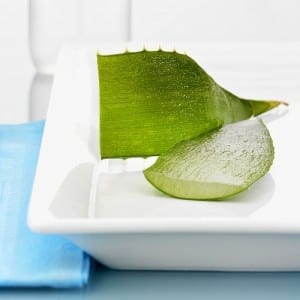Heat rash (aka prickly heat or miliaria) is an itchy inflammation of the skin caused by obstructed sweat glands. Common in hot, humid weather, it usually occurs on covered areas of the body where perspiration accumulates or clothing creates friction. Applied regularly, Aloe Vera gel is highly effective at relieving the burning sensation, preventing infection, and reducing the visible signs of heat rash.
Heat rash results when skin is not exposed to circulating air and sweat cannot evaporate, causing it to accumulate at the surface and sink down, clogging glands. Babies are commonly affected, typically in the diaper region or around the folds of the neck. In addition to diapers, hot weather and sweaty exercise, other factors contributing to heat rash are long periods of bed rest, over-zealous winter bundling, prolonged use of electric blankets or heating pads, and certain prescription drugs. Although heat rash typically clears up on its own in a day or two, medical attention is necessary for a rash that spreads, or is accompanied by fever.
Symptoms
Heat Rash has three common manifestations. In all types, sweat is blocked beneath the surface, leaving skin dry to the touch. In addition to a Google image search (for the brave), there are some tell-tale signs that can assist in self-diagnosis.
Miliaria rubra (classic prickly heat), the most common heat rash, is associated with itching and small bumps or blisters surrounded by redness.
Miliaria crystallina results when the blockage occurs at duct openings and is characterized by a proliferation of tiny, clear blisters or “sweat bubbles.”
Frequent episodes of heat rash can result in the more dangerous Miliaria profunda, when the blockage occurs deep in the duct. Skin may not look red, and bumps are large and hard. It’s common for these bumps to first form or become pronounced after exercise. Untreated, this can lead to fever and possibly heat exhaustion.
Treating yourself at home
Once you’ve determined that your rash is a case of prickly heat or sweat bubbles and not something more serious, there are a few things you can do to relieve your discomfort, speed healing, and prevent the recurrence of heat rash.

- Wash the area with cold water and mild, diluted soap. Adding a cup of finely ground oatmeal or baking soda can help relieve the itching.
- Allow the rash to air dry completely. Forgo towels. Rubbing the skin will only worsen irritation.
- Keep the affected skin uncovered. If exposing the area is not an option, or you prefer not to go public with your rash, loose, breathable clothing is the best choice.
- Apply Aloe Vera gel (not lotion) to the skin’s surface to reduce the urge to scratch and risk infection. Keep it in the fridge and it feels even better.
- Stay cool and sweat free. Cold compresses and a cool, well ventilated environment help.
Why Aloe Vera works
The most common mistake with heat rash is the use of lotions or oils to relieve dryness. This only further clogs the skin. Aloe gel straight from the plant is 96% water and allows the skin to breath while fighting bacterial infection and reducing pain. A combination of lignins and polysaccharides enable the gel to penetrate the surface, delivering compounds that anesthetize tissue, reduce swelling, and trigger immune response to layers many topical agents never reach. Applied every few hours, Aloe addresses the causes of irritation in these layers while fighting bacteria at the surface, decreasing the duration and severity of the rash.
here says
Great web site you have got here.. It’s difficult to find quality writing like yours nowadays.
I truly appreciate people like you! Take care!!